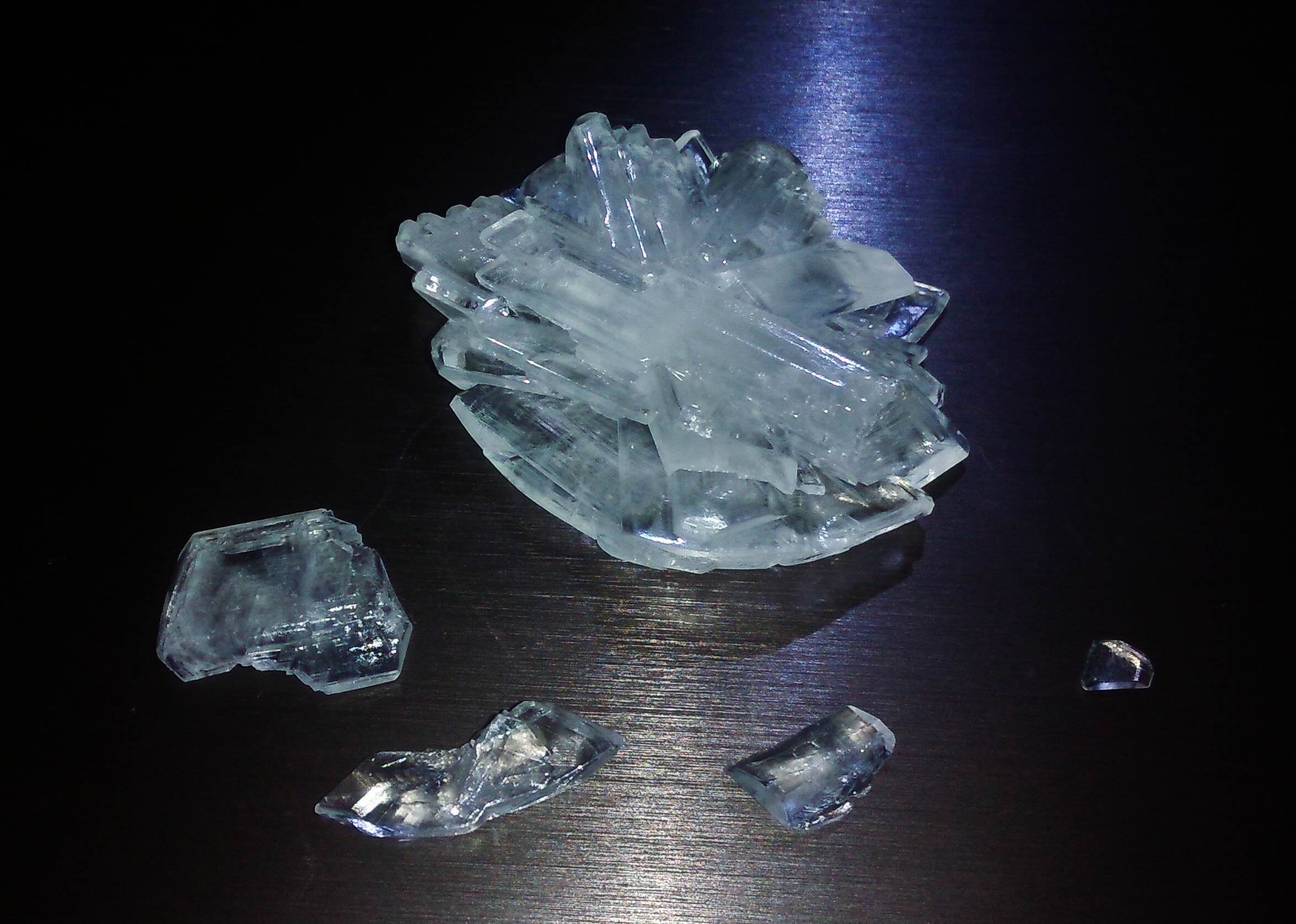
Bismuth(III) nitrate is a fascinating compound with a variety of uses and properties. Known for its role in medicine, cosmetics, and even fireworks, this chemical has more to it than meets the eye. Did you know that bismuth(III) nitrate is often used in the production of bismuth oxychloride, a key ingredient in many cosmetics? Or that it plays a crucial role in organic synthesis? This compound is also notable for its unique crystal structure and its ability to form beautiful, iridescent crystals. Whether you're a chemistry enthusiast or just curious about the world around you, these 30 facts about bismuth(III) nitrate will surely pique your interest. Let's dive into the intriguing world of this versatile compound!
Key Takeaways:
- Bismuth(III) Nitrate is a versatile compound used in catalysts, pharmaceuticals, and even fireworks. But it requires careful handling and disposal to prevent environmental harm.
- This compound has unique properties, but it can be toxic if mishandled. Always use protective gear and follow regulations for safe use and disposal.
What is Bismuth(III) Nitrate?
Bismuth(III) Nitrate is a chemical compound with a variety of uses in different fields. Known for its unique properties, it has become a subject of interest for scientists and industry professionals alike. Let's dive into some fascinating facts about this compound.
- Chemical Formula: Bismuth(III) Nitrate has the chemical formula Bi(NO₃)₃.
- Appearance: It typically appears as a white or slightly yellow crystalline solid.
- Solubility: This compound is highly soluble in water and nitric acid.
- Molecular Weight: The molecular weight of Bismuth(III) Nitrate is approximately 394.01 g/mol.
- Oxidizing Agent: It acts as a strong oxidizing agent in chemical reactions.
- Decomposition: When heated, Bismuth(III) Nitrate decomposes to form bismuth oxide, nitrogen dioxide, and oxygen.
- Hygroscopic Nature: It is hygroscopic, meaning it can absorb moisture from the air.
- Melting Point: The melting point of Bismuth(III) Nitrate is around 75°C (167°F).
Uses in Various Industries
Bismuth(III) Nitrate finds applications across multiple industries due to its versatile properties. Here are some of the key uses:
- Catalyst: It is used as a catalyst in organic synthesis reactions.
- Pharmaceuticals: This compound is utilized in the production of certain pharmaceuticals.
- Pigments: Bismuth(III) Nitrate is a component in the manufacture of pigments.
- Cosmetics: It is sometimes used in cosmetic formulations.
- Glass Manufacturing: This compound plays a role in the production of specialty glass.
- Fireworks: It is used in fireworks to produce a bright white light.
- Analytical Chemistry: Bismuth(III) Nitrate is employed in various analytical chemistry techniques.
Safety and Handling
Handling Bismuth(III) Nitrate requires caution due to its chemical properties. Here are some important safety facts:
- Toxicity: It is considered toxic if ingested or inhaled.
- Protective Gear: Always use protective gear, such as gloves and goggles, when handling this compound.
- Storage: Store it in a cool, dry place away from incompatible substances.
- First Aid: In case of contact with skin or eyes, rinse immediately with plenty of water and seek medical advice.
- Disposal: Dispose of Bismuth(III) Nitrate according to local environmental regulations.
Environmental Impact
Understanding the environmental impact of Bismuth(III) Nitrate is crucial for its responsible use. Here are some environmental considerations:
- Water Contamination: It can contaminate water sources if not disposed of properly.
- Soil Impact: This compound can affect soil quality and plant growth.
- Air Pollution: Decomposition can release nitrogen dioxide, a harmful gas, into the atmosphere.
- Biodegradability: Bismuth(III) Nitrate is not biodegradable, making its disposal challenging.
- Regulations: There are strict regulations governing the use and disposal of this compound to minimize environmental harm.
Interesting Chemical Properties
Bismuth(III) Nitrate has some intriguing chemical properties that make it unique. Here are a few:
- Coordination Chemistry: It forms coordination complexes with various ligands.
- Reactivity: This compound reacts with bases to form bismuth hydroxide.
- Color Change: When exposed to light, it can undergo a color change due to photodecomposition.
- Crystal Structure: Bismuth(III) Nitrate has a monoclinic crystal structure.
- Electrochemical Properties: It exhibits interesting electrochemical properties, making it useful in certain applications.
Bismuth(III) Nitrate: A Fascinating Compound
Bismuth(III) Nitrate holds a unique spot in the world of chemistry. Known for its distinctive properties and varied applications, this compound is more than just a chemical curiosity. From its use in medicines to its role in industrial processes, Bismuth(III) Nitrate proves its versatility. Its crystalline structure and solubility in water make it a subject of interest for both scientists and hobbyists alike. Understanding its reactivity and safety measures is crucial for anyone working with it. Whether you're a student, a researcher, or just someone curious about chemistry, knowing these facts can deepen your appreciation for this compound. Bismuth(III) Nitrate isn't just a chemical; it's a gateway to understanding more about the complex world of elements and compounds. Keep exploring, and who knows what other fascinating facts you'll uncover next!
Frequently Asked Questions
Was this page helpful?
Our commitment to delivering trustworthy and engaging content is at the heart of what we do. Each fact on our site is contributed by real users like you, bringing a wealth of diverse insights and information. To ensure the highest standards of accuracy and reliability, our dedicated editors meticulously review each submission. This process guarantees that the facts we share are not only fascinating but also credible. Trust in our commitment to quality and authenticity as you explore and learn with us.
